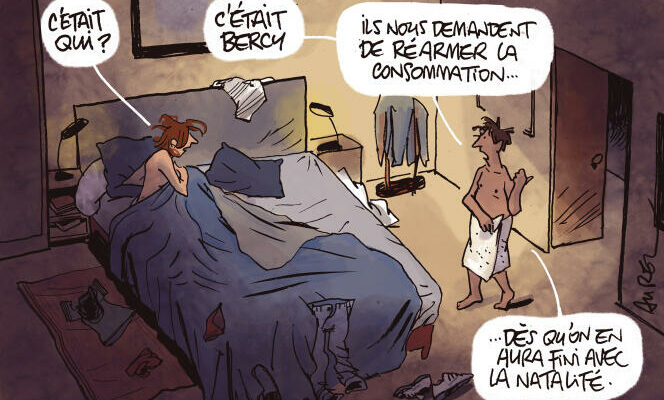With a completely sluggish fourth quarter, the French economy ended the year as it started it: at a standstill. Over the whole of 2023, growth in gross domestic product (GDP) stands at 0.9%, after 2.5% in 2022 and 6.4% in 2021, according to figures published on Tuesday January 30, by the National Institute of Statistics and Economic Studies (Insee). A figure close to the government’s growth hypothesis, set at 1%. But which is entirely driven by activity in the second quarter, which reached 0.7% after a slight upward revision. Over the other three quarters, growth was 0%.
Positive point: the fear of a recession, recurring for months, due in particular to the very sharp rise in interest rates, has not materialized. “ It’s not a good year, but the economy has held up, we’re not doing too badly, especially compared to Germany”, comments Mathieu Plane, economist at the French Observatory of Economic Conditions. Across the Rhine, activity contracted by 0.3% in 2023 and economists expect little improvement in 2024. “ Fortunately there was aeronautics, whose sales drove French growth in the second quarter, and that electricity production reboundedobserves, for his part, Stéphane Colliac, economist at BNP Paribas. After having hampered growth by 0.4 points in 2022, this caused it to regain 0.35 points in 2023.
We should not count, in fact, on household consumption, the main driver of the economy since it represents half of GDP, to keep the machine running in 2023. Undermined by inflation and loss of power of purchase, it increased by a small 0.7% over the whole year. In the fourth quarter, consumption of goods was still down by 0.6%, despite a small jump in December (+0.3%). This slight improvement is linked to spending on energy (+1.7%) and manufactured goods (+0.6%).
But food spending continues to slide. In supermarkets, the year ended with a 4.7% drop in consumption, after – 3.6%, in 2022. “It’s totally unusual”, underlines Nicolas Carnot, director of economic studies and syntheses at INSEE. But, according to him, the situation is changing. “ The slowdown by rates now follows the inflation shockhe deciphers. Things shift a bit between consumption and investment. »
In other words, it is rather real estate acquisitions or large purchases, sensitive to the cost of credit, which will suffer in 2024, while everyday expenses could pick up again thanks to the lull in prices. Indeed, some timid signs of improvement are emerging: the household confidence indicator has recovered slightly, according to INSEE. Automobile purchases, over the last quarter, picked up slightly. Retail opinion surveys are improving. “ In our opinion, the recovery will come from consumption. Household morale is rising, disinflation is well underway: two elements which support this scenario. The big question is when it will happen”confirms Maxime Darmet, economist at Allianz Trade, who sees this improvement occurring in the second quarter.
You have 45% of this article left to read. The rest is reserved for subscribers.
